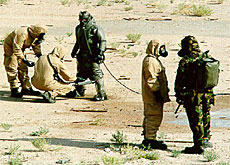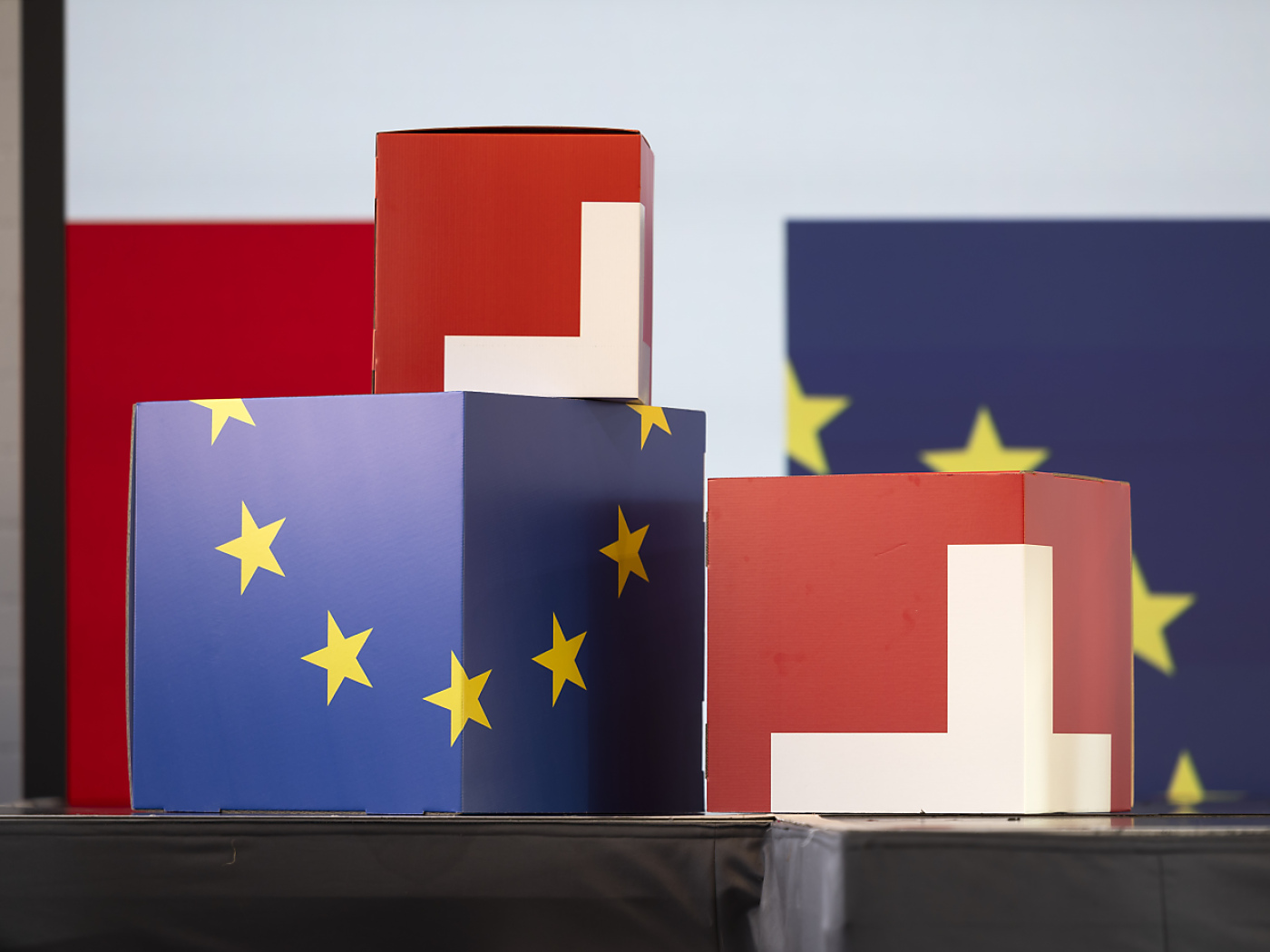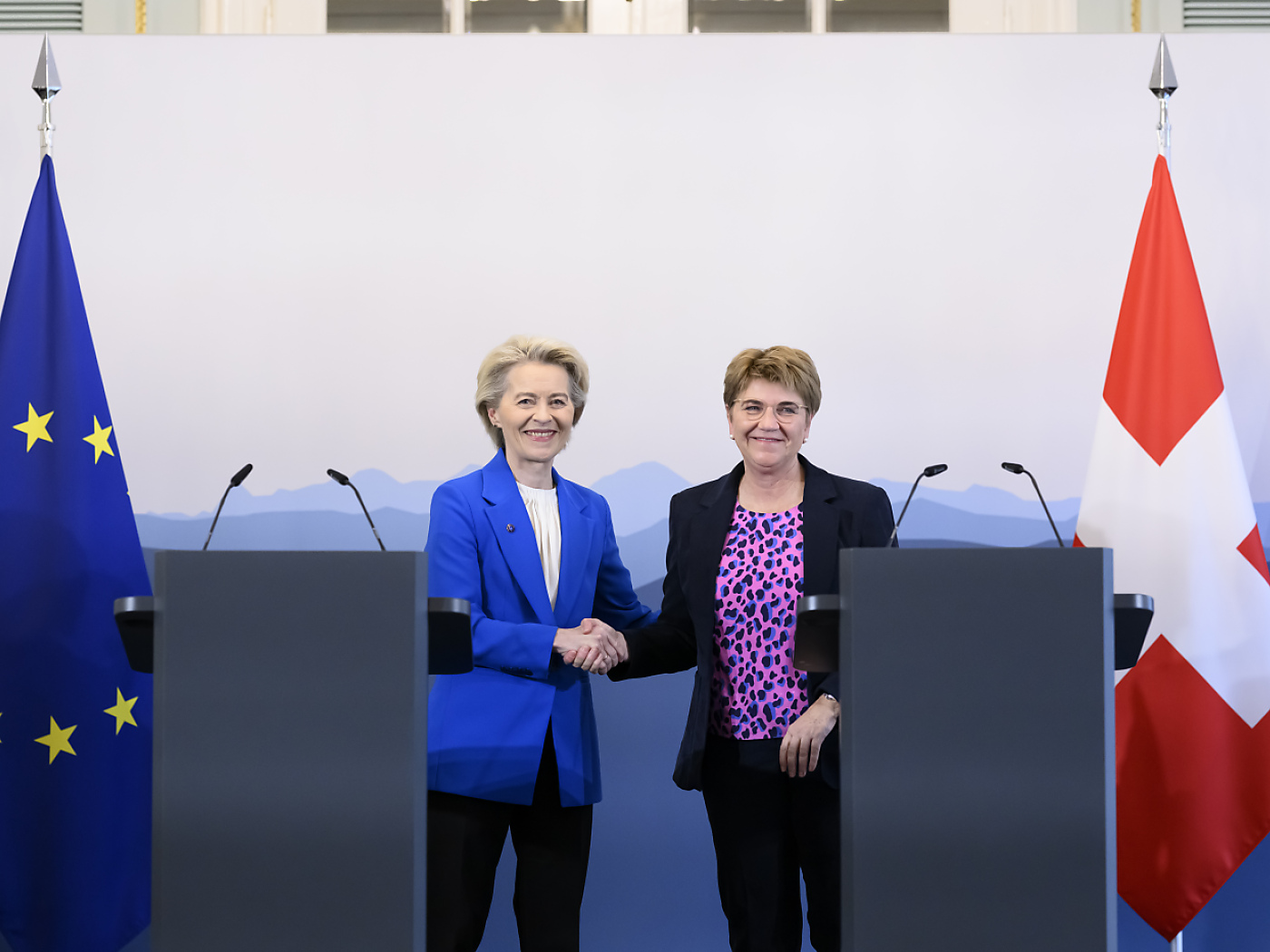spiez scientists work for peace

Founded in 1925 to provide gas masks for the Swiss in case of a chemical attack, the Spiez Laboratory today is a centre of global renown.
On behalf of international organisations, it trains experts and sends specialists to war zones or polluted sites from Siberia to Iraq.
Since ancient times man has used poison on the battlefield. But it was during the First World War that it became a weapon of mass destruction.
A ban laid down by the 1899 Hague Convention did not prevent armies from pouring 125,000 metric tons of chemicals on the trenches from 1914-18, causing 100,000 deaths and injuring more than a million.
In the face of widespread condemnation of the practice the League of Nations issued the Geneva Protocol on June 17, 1925. This banned the use of chemical and biological weapons, but said nothing about producing or stocking them.
The same year also saw the birth of the Spiez Laboratory. Sitting on the
banks of Lake Thun at the foot of the Bernese Alps, its experts worked on developing and constantly improving gas-resistant masks and clothing.
On August 6, 1945, a mushroom cloud over the Japanese city of Hiroshima ushered in a new era of menace.
Nuclear protection
In addition to its chemical expertise, the Spiez Laboratory rapidly set up nuclear protection units – first military and later civilian.
Today it checks the presence of radioactivity and heavy metals in soil and food in and around nuclear installations or after an accident
such as Chernobyl.
More recently, Spiez has been increasing its know-how in the domain of biological weapons. Although they have never been used on a grand scale, the risk is always there. If such a scenario were to occur, it would be vital to identify as quickly as possible the virus in question.
Unfortunately the Geneva Protocol failed to prevent the use of chemical weapons. They left their mark on much of the 20th century, with the exception of the Second World War when the fear of tit-for-tat strikes persuaded the warring sides not to resort to their stocks of toxic chemicals.
But the Italians used them in
Ethiopia in 1937, the Japanese in China during the 1930s and the Egyptians in Yemen in the 1960s.
When war broke out between Iran and Iraq in 1983, Baghdad soon turned to gas (accusing Tehran of doing the same) and even employed it against its own Kurdish population.
Swiss observer
Appalled by developments, the United Nations sent observers to the frontline.
Among them was Colonel Ulrich Imobersteg, then in charge of the Swiss army’s centre for nuclear, biological and chemical warfare – a neighbour of the Spiez Laboratory. His visits to the region in 1984,
1986 and 1987 were the first international missions undertaken by a Spiez expert.
Thanks to the country’s traditional neutrality and the quality of their scientific work, Swiss experts would soon find themselves dispatched to all four corners of the globe.
Thus an institution set up by the military found itself putting its expertise to work for peace – something that came easily as Spiez had always handled dangerous substances in order to learn how to protect against them and never to produce weapons.
In 1997, after lengthy negotiations, an international convention banning chemical weapons came into force. Spiez figured among the 12
laboratories charged with monitoring its implementation.
Its experts have participated in international missions to Iraq and the Balkans, either to search for chemical weapons or to supervise their destruction. At the same time specialists from abroad head to Lake Thun to undertake training courses.
Environment
Spiez does work for the UN Environment Programme and for the World Health Organization, notably to check water quality in places such as Afghanistan and Siberia.
In the nuclear field, the laboratory works with the International Atomic Energy Agency and Nato’s
Partnership for Peace. Its specialists also analyse the risks of depleted uranium for populations from Kuwait to Kosovo.
swissinfo, Marc-André Miserez
Until the end of the Cold War, Switzerland remained strictly neutral between East and West.
After the collapse of the Soviet bloc, the Swiss join Nato’s Partnership for Peace. They also send soldiers to Bosnia and Kosovo, mainly as drivers and mechanics.
In 2002, Switzerland joins the UN. A year later, Swiss officers are delegated to the multinational forces in Afghanistan.
Geneva is also home to three international centres educating soldiers about peace promotion: the Centre for Security Policy, the International Centre for Humanitarian Demining and the Centre for Democratic Control of Armed Forces.
The Spiez laboratory employ around 100 people, mostly researchers and technical staff specialised in biology, chemistry and physics.
Its annual budget is approximately SFr15 million, and it works mainly for government services and the army.
15% of its activities are for foreign mandates.

In compliance with the JTI standards
More: SWI swissinfo.ch certified by the Journalism Trust Initiative









You can find an overview of ongoing debates with our journalists here . Please join us!
If you want to start a conversation about a topic raised in this article or want to report factual errors, email us at english@swissinfo.ch.